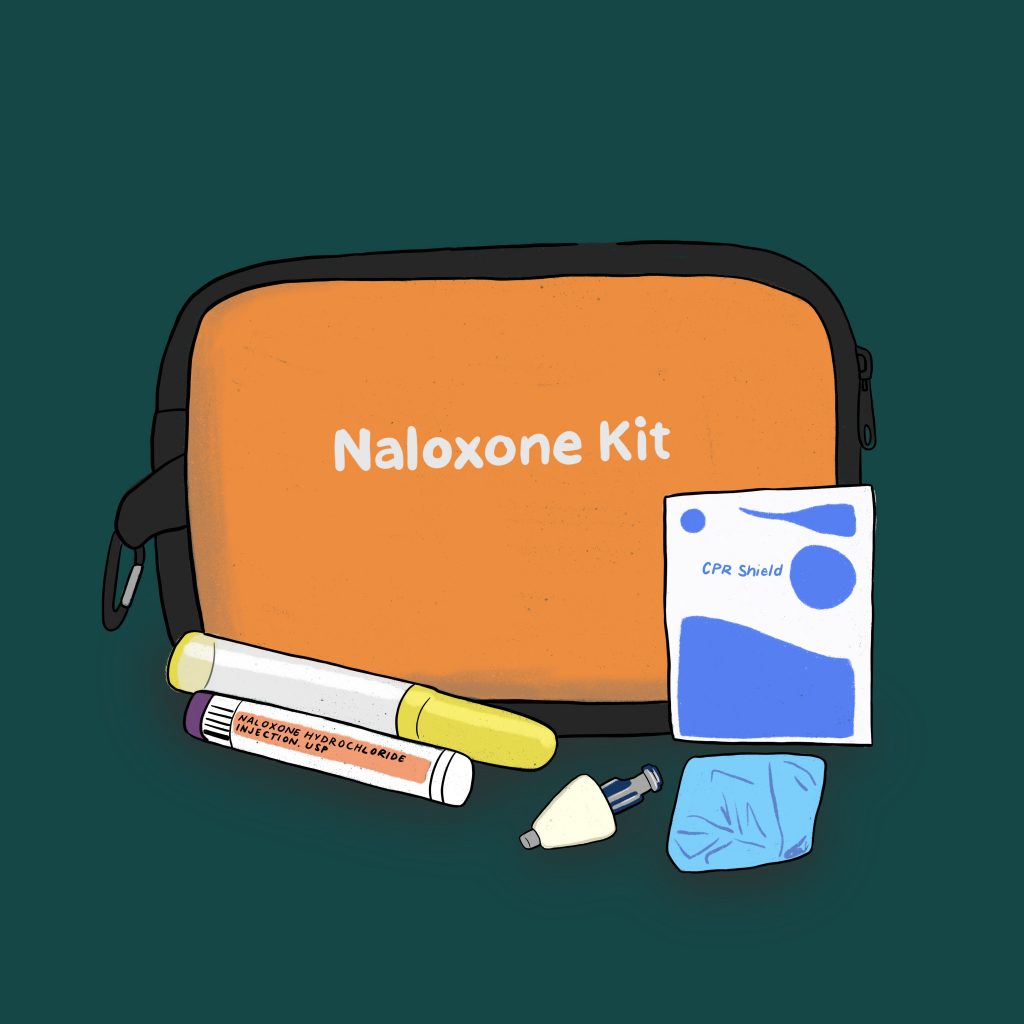Recently, New York state mandated that naloxone, or Narcan, be made available in all university residence halls. At Binghamton University, naloxone kits are now available in AED life-safety equipment stations campus-wide. Additionally, the BU Opioid Overdose Prevention Program (OOPP) has been administering Narcan trainings on campus since 2019.
We commend the University on making these resources more available to students, and we think it is an important step in destigmatizing substance abuse. We hope that the University continues to make drug safety resources more accessible for the student body. Having fentanyl test strips, for example, also readily available in these equipment stations would be enormously helpful. While naloxone is used to prevent opioid induced overdoses, drugs more widely used among college students, such as marijuana and cocaine, can be laced with fentanyl. In fact, in 2020, fatal overdoses among adolescents increased by 94 percent, with many of these deaths attributed to fentanyl-laced prescription medications. We think having these resources more easily accessible in residence halls and on campus is a great step, and we hope to continue to see the University promote and provide these resources more readily.
Additionally, while having these resources readily available on campus is great, dangerous situations of drug overdoses or laced consumption are probably more likely to occur downtown than on BU’s main campus. Therefore, having resources like Narcan and fentanyl strips widely available downtown — for example, in the bathrooms of popular bars and clubs — would be an extremely useful initiative for the town to consider. It may also be useful if, for example, the University had kits readily available to fraternities and sororities or different student organizations having mixers or events downtown where drugs might be present.
In addition to having these drug safety resources widely available to BU students, it is crucial that, as an area highly impacted by the opioid epidemic, community members in Broome County also have access to these resources, perhaps through a similar framework that BU has utilized. In 2020, Broome County reported double the opioid overdose rate of the statewide average, at 35.8 overdoses per 100,000 people. In 2022 alone, 460 people in Broome County overdosed on opioids, with 80 people dying. Amazing local organizations like Truth Pharm, the Addiction Center of Broome County (ACBC) and Southern Tier AIDS Program (STAP) offer a variety of resources like sterile syringes and fentanyl strips, in addition to harm reduction and drug safety training. However, as aforementioned, if the county could make resources more readily available in stores, bars or even at certain stations on the street, there is a greater chance that bystanders will be able to intervene quickly and effectively when someone is experiencing a drug overdose emergency.
Unfortunately, despite the alarmingly high overdose rate and the proven effectiveness of safer consumption sites in preventing health complications and deaths that can occur from drug use, Broome County does not have any. In August of 2022, the Village of Johnson City introduced a new law to limit where overdose prevention centers, heroin safe zones, supervised consumption facilities or supervised injection sites would even be allowed to be located. The law makes it illegal for these sites to be located within 250 feet of any residential building or 500 feet of churches, schools, parks, playgrounds or arcades. They are also completely prohibited from I-District. If safer consumption sites were to come to Johnson City, these parameters make establishing them extremely difficult.
BU’s increasing availability of Narcan kits is a monumental step forward in the destigmatization of substance abuse and has the potential to reduce harm. We hope that these resources and harm reduction training can continue to be promoted and made more widely and easily available to students, especially in more locations. Also, recognizing that Broome County, rather than just BU, is more impacted by the opioid epidemic, we hope that BU’s progress can serve as a framework or example for the county to increase access to these crucial resources by having them easily available at frequented locations.



